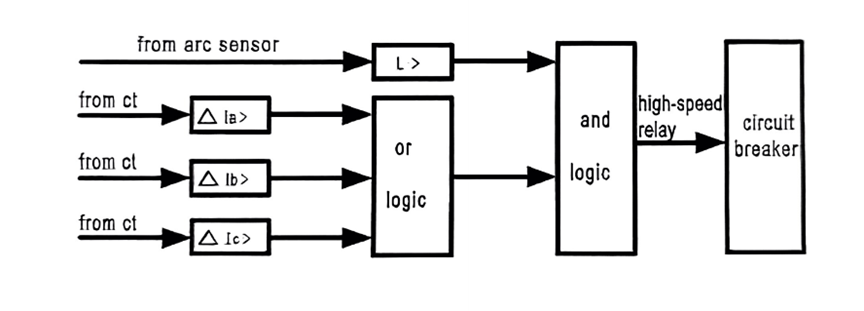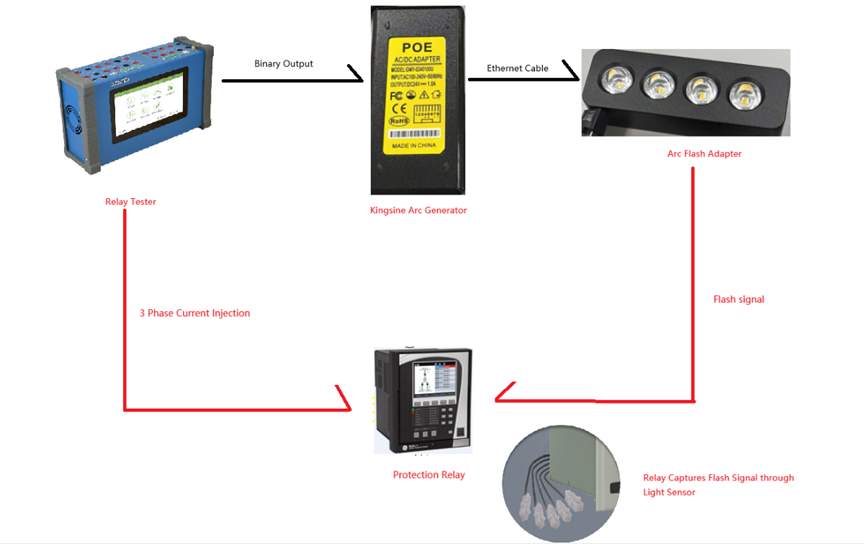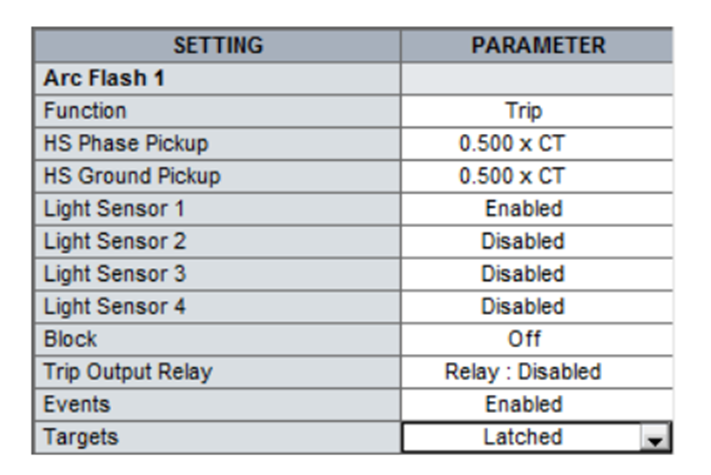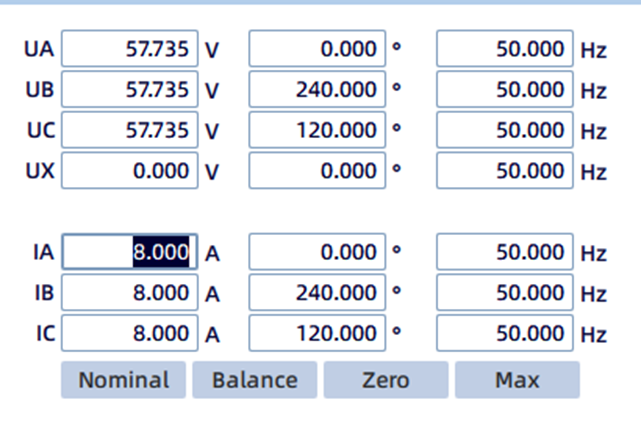Arc protection plays a critical role in relay protection systems, providing rapid defense against the extreme hazards caused by arc faults in power systems. Arc temperatures can reach thousands to tens of thousands of degrees Celsius, and their destructive potential increases exponentially over time. Arc flashes can instantly burn through insulation layers, melt conductors, and even cause explosions or fires—leading to permanent damage of vital equipment such as switchgear, transformers, and cables, resulting in high maintenance costs. Moreover, the intense light and high heat released by arcs pose direct threats to personnel safety, potentially causing severe burns or electric shock.
To effectively evaluate a relay protection system's ability to respond to arc faults, KINGSINE's Arc Simulation System employs an innovative optoelectronic composite excitation technology. It delivers high-precision, synchronized outputs that simulate both arc light signals and fault current signals (with an accuracy of up to 0.02%), faithfully reproducing key characteristics of real arc faults. This allows for precise verification of whether the protection devices can accurately detect arc features and issue trip commands within milliseconds (minimum resolution: 1 ms). This ensures the fault-clearing time remains within the safe threshold and provides a scientific basis for evaluating the protection system's reliability and response speed.
By validating this millisecond-level rapid protection mechanism, arc energy release can be effectively suppressed, significantly reducing equipment damage and preventing fault escalation. Test data shows that adopting this protection solution can shorten fault clearing time by more than 90% compared to traditional methods. This not only reduces the extent of equipment damage and lowers repair costs, but also provides a more reliable safety barrier for on-site personnel.

The KINGSINE Arc Protection System uses arc light sensors to detect optical signals emitted by arc faults in real time and combines this with current measurements obtained through current transformers (CTs) monitoring the three-phase circuit. When both arc light signals and overcurrent or current surge criteria (such as L> or Ia>) are met, the protection logic makes a comprehensive assessment of the current circuit status. Upon confirmation of a fault, the system immediately triggers a high-speed relay to trip the circuit breaker, rapidly isolating the fault and effectively containing the arc energy.

Connect the Arc Generator as follows:
Input Terminal → Relay Protection Tester (used to receive Binary Output signals)
Output Terminal → Arc Flash Adapter
Connect the three-phase current output terminals (Ia/Ib/Ic) of the relay protection tester to the current sampling circuit of the device under test.
Align the output end of the Arc Flash Adapter with the light detection window of the arc light sensor on the protection device. This ensures that the arc flash signal can be received correctly for detection.
The Arc Flash Adapter meets IEC 61439-2 standards for light intensity:
√ Simultaneous injection of simulated current fault and light signal
√ Supports transient arc simulation with a rise time ≤1 ms
√ Optical-electrical signal delay < 100 μs
KINGSINE's relay protection tester, such as the KFA320, utilizes high-precision signal generation technology and features:
Wide-range current output: 0–20 A continuously adjustable
Ultra-high accuracy: ±0.02% reference precision
Multi-channel synchronous output: supports 6 × 20 A outputs, up to 60 A in parallel
Lightweight design: Only 3.8 kg, combining lab-grade precision with field portability
KINGSINE products provide comprehensive test capabilities for arc fault protection validation.
Access the relay protection device menu to set the phase current threshold for arc protection and enable the light sensor function.


In the relay protection tester software, configure parameters via the AC Test / Sequence Test module:

This module allows users to directly configure output parameters and quickly set current thresholds that meet arc protection triggering conditions. Alternatively, the current output value can be set slightly below the threshold and incremented in steps to verify correct triggering behavior.

Arc Generator Logic:
Trigger Condition: Activated only when a transient voltage is detected at the signal input port
Control Method: Trigger signal sent through the Binary Output (BO) port of the relay protection tester
Timing Coordination: Trigger command sent immediately after test starts
The Binary Output port supports touch-enabled fast on/off configuration.
This software module is built with a revolutionary human-machine interaction (HMI) design, supporting:
One-click parameter setup – configure output values directly with no technical expertise required
Intelligent batch processing – simultaneously configure multiple phase thresholds in a single operation
Template saving – test parameters can be saved locally and auto-loaded on next use for zero-setup reuse
Three-step streamlined arc testing process:
1. Input starting current value
2. Touch-based BO port on/off configuration
3. Click "Start Test"
KINGSINE adheres to a user-friendly software design philosophy, delivering an intuitive "what you see is what you get" interface for more efficient testing workflows.
Use the protective relay test kit in conjunction with the arc light sensor to simulate arc flash signals and fault current conditions, and verify the accuracy of the protection device's response.
Analyze event logs to confirm whether trip logic and time delay characteristics meet the configured settings.
Supports repeated testing and generates professional RTF/PDF-format reports conforming to industry standards with a single click—ensuring data traceability and result reproducibility, aiding both research and engineering analysis.